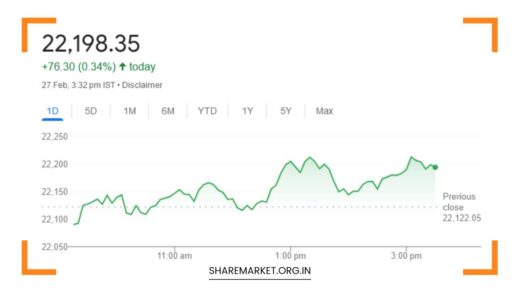Large Number of Stocks Still at 52-Week Highs Indicates Robust Midcap and Smallcap Investments

Stocks at 52-Week Highs
In the current financial landscape, the contrast between stocks reaching their 52-week highs and those plumbing their 52-week lows paints a revealing picture.
It’s evident that a considerable number of stocks are currently basking in the glory of their 52-week highs, outstripping the cohort of stocks languishing at their lows.
This dichotomy in the market reflects an intriguing dynamic, and various factors are at play to explain this scenario.
Notably, stocks of several prominent companies, such as BSE, Medplus, and Plaza Wires, which recently joined the ranks of publicly traded firms, have showcased remarkable resilience and bullish trends over the last three trading sessions.
These companies have demonstrated a unique ability to ride the waves of market volatility and remain in an upward trajectory, providing a glimmer of hope for investors in these uncertain times.
However, it’s important to recognize that not all segments of the market have fared equally well. Midcap and smallcap stocks, in particular, have borne the brunt of the recent stock market turbulence.
Many of these stocks have witnessed significant declines from their peak valuations, with investors feeling the pinch of these corrections.
This shift has raised concerns about the vulnerability of these companies, especially those within the midcap and smallcap brackets, which are often viewed as riskier investments compared to their large-cap counterparts.
Delving into the data reveals some interesting insights. According to statistics provided by the Bombay Stock Exchange (BSE), on October 25, a mere 14 out of the staggering 4,090 stocks listed on the exchange triggered the lower circuit during a day of heightened selling activity.
This lower circuit, when hit, effectively halts trading in a stock for a specified duration. The occurrence of a lower circuit is often seen as a red flag, signaling waning investor interest and confidence in the stock.
Conversely, when a stock doesn’t hit the lower circuit, it signifies that there are active buyers and sellers in the market, contributing to the stock’s continued trading activity.
Despite the alarming downturn in midcap and smallcap stocks, one intriguing aspect of this market phenomenon is the dwindling number of stocks that are triggering the lower circuit.
This trend suggests that even in the face of broader market uncertainty, investors are finding some stocks to be more resilient, and they continue to engage in trading these equities. It’s also a signal that, while volatility may be rampant, there is still a level of trust in the market for select companies.
These dynamics raise questions about the overall sentiment in the market. Market analysts have expressed concerns about the potential weakening of market momentum and an increasing sense of pessimism.
While these worries are not unfounded, it’s crucial to note that the overall count of stocks touching their 52-week highs still significantly outweighs those scraping their 52-week lows. This discrepancy is crucial in understanding the broader market sentiment – there is still a semblance of optimism.
Moreover, the mentioned companies, BSE, Medplus, and Plaza Wires, are not anomalies. They are representative of a subset of stocks that are exhibiting an impressive degree of resilience.
These companies’ stocks have been on a bullish trajectory over the past three trading sessions, defying the broader market trend. This resilience could be attributed to various factors, such as strong financial performance, robust growth prospects, and a solid market positioning.
What’s also noteworthy is the active role of institutional investors in this scenario. The prevailing market conditions have provided them with an opportunity to acquire shares at discounted prices.
While retail investors and those without readily available funds are primarily on the sidelines, institutional investors with significant resources are leveraging this moment of uncertainty to strengthen their portfolios.
This underscores the importance of having access to capital in seizing opportunities in the market.
When evaluating the valuation of stocks in this context, it’s clear that panic selling has played a substantial role in the recent market volatility. Stocks that had witnessed significant price appreciation have faced a correction, bringing their valuations back to more reasonable levels.
This correction is particularly pronounced in the midcap and smallcap segments. However, it’s essential to note that several high-quality stocks have managed to weather the storm and have not experienced significant declines, thanks to continued interest from both retail and institutional investors.
Nirav Karkera of Fisdom, a financial services platform, has observed that the panic-driven selloff has resulted in a reevaluation of stock valuations.
This phenomenon is particularly evident in midcap and smallcap stocks. Some of these stocks had experienced substantial price increases, and the correction they are undergoing can be seen as a necessary market adjustment to bring their valuations to more reasonable levels.
In the midst of market turbulence, many high-quality stocks have stood their ground, underscoring their strength and appeal to investors.
For instance, over the last month, the forward valuation of the BSE Midcap index has seen a decline from 28.86 times to 27.79 times.
Similarly, the one-year forward valuation of the BSE Smallcap index has also seen a drop, from 24 times to 23.39 times. These shifts in valuation metrics reflect the ongoing market correction and the resulting impact on the valuation of midcap and smallcap stocks.
This brings us to a critical question: Is this the right time to invest? Some fund managers and financial experts believe that the current market conditions present an opportune moment for investors with available cash to consider their options.
Chandraprakash Padiyar, Senior Fund Manager (Equity) at Tata Asset Management Company, has previously indicated that the differential valuations in the market suggest that large-cap stocks may have a brighter outlook in the future.
He has highlighted the potential of market corrections as opportunities to add sound investments to one’s portfolio.
It’s important to remember that market corrections, though tumultuous, often open doors to investments that were previously considered too expensive.
The current scenario is no exception. For those with the financial means to do so, this could be an ideal time to diversify portfolios and acquire stocks at more attractive valuations. It’s also an opportunity to explore stocks in various sectors, especially those in the manufacturing sector, where valuations have become particularly appealing.
In summary, the current market landscape is marked by a stark contrast between stocks at their 52-week highs and those at their lows. While midcap and smallcap stocks have experienced substantial declines, certain stocks have displayed remarkable resilience and continued to rise.
Institutional investors are capitalizing on the market turbulence, while retail investors are more cautious. The correction in valuations is seen as a natural market adjustment, especially in the midcap and smallcap segments, where some stocks had surged to unsustainable levels.
This correction presents an opportunity for investors to add quality stocks to their portfolios. Ultimately, the current market conditions, while challenging, also offer a silver lining for those who are prepared to navigate the complexities and seize the opportunities they present.

















